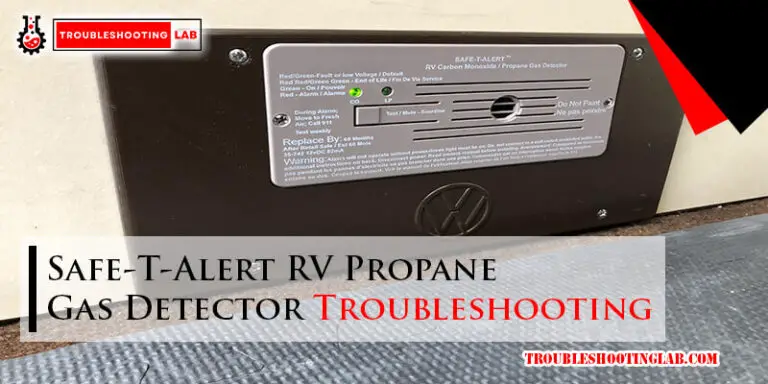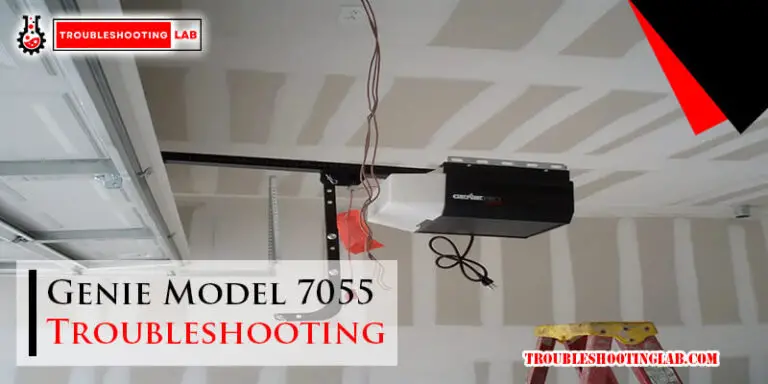Breville Espresso Machine Troubleshooting: Fix Fast
If you’re troubleshooting your Breville espresso machine, check the switch, control board, thermostat, thermal fuse, and thermistor for signs of damage or wear. Additionally, ensure that the water filter is not blocked and that the main water supply is turned on.
Pump and pump head issues can also cause the machine to malfunction. Consider resetting the machine if necessary.

1. The Machine Won’t Turn On
Having a Breville espresso machine that won’t turn on can be frustrating, especially when you’re craving that perfect cup of coffee. If you’re facing this issue, there are a few potential culprits that you can investigate. It’s important to inspect the switch, control board, thermostat, thermal fuse, and thermistor for any signs of damage or wear and tear. Let’s dive into each component to troubleshoot the problem.
Inspect The Switch
The first component to check is the switch. Make sure it’s in the proper position and securely connected to the machine. Sometimes, switches can become loose or faulty, preventing the machine from turning on. If the switch looks intact, move on to the next step.
Inspect The Control Board
The control board is responsible for managing the machine’s functions and overall performance. Carefully examine the control board for any visible signs of damage, such as burn marks or loose connections. If you spot any issues, it may be necessary to replace the control board.
Inspect The Thermostat
The thermostat regulates the temperature inside the espresso machine. If the thermostat is faulty or not properly calibrated, it may prevent the machine from turning on. Check the thermostat for any signs of damage or malfunction. If it appears to be the culprit, consider replacing the thermostat to restore functionality.
Inspect The Thermal Fuse
The thermal fuse is a safety device that protects the machine from overheating. If the thermal fuse is blown, it will interrupt the electrical circuit, causing the machine not to turn on. Carefully inspect the thermal fuse for any signs of damage or discoloration. If it’s faulty, you’ll need to replace the thermal fuse with a new one.
Inspect The thermostat.
The thermistor is a sensor that measures the temperature inside the espresso machine. If the thermistor is damaged or malfunctioning, it can prevent the machine from turning on. Inspect the thermistor for any visible signs of damage or loose connections. If necessary, replace the faulty thermistor with a new one to resolve the issue.
By following these troubleshooting steps and inspecting the switch, control board, thermostat, thermal fuse, and thermistor, you’ll be able to identify the cause of your Breville espresso machine not turning on. Remember to exercise caution when dealing with electrical components and consult the machine’s manual or contact customer support if needed.
2. Resetting the Breville Espresso Machine
Step-by-step Guide To Resetting the Breville Barista Express Espresso Machine
If you’re experiencing issues with your Breville Barista Express espresso machine, performing a reset might help resolve the problem. Follow these steps to reset your Breville espresso machine:
- Ensure that your machine is turned off and unplugged from the power source.
- Wait for at least 5 minutes to allow the internal components to fully reset.
- Once the time has elapsed, plug in your machine and turn it on.
- Press and hold the ‘Program’ button located on the front of the machine for approximately 10 seconds.
- Release the ‘Program’ button when you see the lights on the machine start to flash.
- Your Breville Barista Express espresso machine is now reset and ready to use.
Troubleshooting Tips For Common Reset Issues
If you encounter any issues during the reset process, here are some troubleshooting tips to help you overcome them:
| Issue | Troubleshooting Tip |
| No Power | Check the power outlet and ensure that it is functioning properly. Try plugging another device into the same outlet to confirm. |
| The machine not turning on | Inspect the switch, control board, thermostat, thermal fuse, and thermistor for any signs of damage or wear. Replace any faulty components. |
| Low Pressure | Examine the pressure gauge, seal or gasket, and water line for any obstructions or malfunctions. Clean or replace the affected parts accordingly. |
| No Water Flow | Check if the main water supply is turned on and ensure that the water filter is not blocked. Dirt in the water supply can sometimes cause valve jams or pump failures. |
By following these troubleshooting tips and performing a reset of your Breville Barista Express espresso machine, you can often resolve common issues and get your machine back in working order.
3. Low Pressure
Causes Of Low Pressure In Breville Espresso Machines
Experiencing low pressure in your Breville espresso machine can be frustrating, especially when you’re craving that perfect cup of coffee. There are a few potential causes for this issue:
- Blockage in the system: Over time, coffee grounds and mineral deposits can accumulate in the internal components of the machine, causing blockages that restrict the flow of water, resulting in low pressure.
- Clogged steam wand: A clogged steam wand can also contribute to low pressure. Milk residue or other debris can obstruct the wand and disrupt the overall water flow.
- Faulty pump: The pump is responsible for generating the necessary pressure to brew your espresso. If the pump is malfunctioning or worn out, it may not be able to maintain the proper pressure.
How To Fix Low-Pressure Issue
If you’re facing low-pressure problems with your Breville espresso machine, don’t worry. Here are a few troubleshooting steps you can take to fix the issue:
- Descale the machine: Performing regular descaling helps remove any mineral deposits that may be causing blockages. Follow the manufacturer’s instructions to describe your Breville espresso machine properly.
- Clean the steam wand: Ensure the steam wand is clean and free from any residue. Use a small brush or pin to clear any blockages.
- Check the water reservoir: Ensure that the water reservoir is properly filled. A low water level can result in low pressure.
- Inspect the pump: Check the pump for any visible signs of damage or wear. If necessary, replace the pump with a new one.
- Unclog the filter basket: Remove the filter basket and clean it thoroughly. A clogged filter basket can restrict water flow and cause low pressure.
Troubleshooting Tips And Solutions
If the above steps haven’t resolved the low-pressure issue, here are some additional troubleshooting tips and solutions:
- Ensure the machine is properly heated: Allow sufficient time for the machine to heat up before attempting to brew espresso.
- Use the right coffee grind size: For Breville espresso machines, it’s important to use the appropriate grind size. Experiment with different grind settings to find the one that produces the best pressure.
- Check for leaks: Inspect the machine for any leaks that may be affecting pressure. Fixing any leaks can help restore proper pressure.
- Consult the user manual: If all else fails, refer to the user manual or contact Breville customer support for further assistance and guidance.
By following these troubleshooting steps and solutions, you should be able to address the low-pressure issue in your Breville espresso machine and enjoy a delicious cup of coffee once again.
4. High Pressure
Causes Of High Pressure In Breville Espresso Machines
High pressure in a Breville espresso machine can result from several factors. Understanding the causes can help you diagnose and fix the issue effectively. Here are some common causes of high pressure:
- Blockage in the system: A blockage in the water line or other internal components can disrupt the flow, causing pressure to build up.
- Malfunctioning pump: A malfunctioning pump may deliver excessive pressure, resulting in high-pressure readings.
- Incorrect grind size: If the coffee grind size is too fine, it can lead to increased resistance, causing higher pressure during extraction.
- Overdosing coffee: Using too much coffee in the portafilter can cause the coffee puck to become compacted, leading to higher pressure.
How To Fix High-Pressure Issue
Fixing the high-pressure issue in your Breville espresso machine can be relatively simple with the right troubleshooting steps. Here’s what you can do:
- Check and clean the water line: Make sure there are no blockages in the water line and clean it thoroughly.
- Inspect the pump: If the pump is not functioning properly, it may need to be repaired or replaced by a professional.
- Adjust the grind size: Experiment with different grind sizes to find the optimal one that reduces unnecessary pressure.
- Measure the coffee dose: Use the appropriate amount of coffee in the portafilter to avoid overcompaction and excessive pressure.
Troubleshooting Tips And Solutions
Here are some additional tips and solutions to troubleshoot and resolve high-pressure issues in your Breville espresso machine:
| Problem | Solution |
|---|---|
| High-pressure readings | Check for blockages in the water line and clean it thoroughly. Inspect the pump and adjust the grind size accordingly. |
| Water leaking from the portafilter | Ensure proper assembly of the portafilter and check for any damaged seals. |
| Inconsistent pressure | Calibrate the machine to ensure consistent pressure levels. Check for any loose connections or worn-out parts. |
By following these troubleshooting tips and solutions, you can effectively diagnose and resolve high-pressure issues in your Breville espresso machine. Remember to always refer to the user manual or seek professional assistance if needed.
5. Steam Wand Not Working Properly
The steam wand is an essential component of a Breville espresso machine, allowing you to create perfectly texturized milk for your coffee beverages. However, there may be times when your steam wand is not functioning as it should. In this section, we will explore common issues with steam wand functionality, troubleshooting steps to fix the problems, and tips for maintaining and cleaning the steam wand to ensure optimal performance.
Common Issues With Steam Wand Functionality
The steam wand may encounter various problems that can hinder its performance. Here are some common issues you might face:
- Poor steam pressure
- No steam coming out
- Inconsistent steam flow
- Steam wand leaking
- Steam wand not heating up
Understanding these issues will help you diagnose and resolve the problem effectively.
Troubleshooting Steps To Fix Steam Wand Problems
When you encounter issues with your steam wand, try the following troubleshooting steps:
- Check the steam wand position: Ensure that the steam wand is properly engaged and in the correct position.
- Clean the steam wand: Accumulation of milk residue can clog the steam wand. Use a damp cloth or steam wand cleaning brush to remove any buildup.
- Check the steam wand tip: The steam wand tip may be partially blocked. Carefully remove the tip, clean it thoroughly, and reattach it.
- Inspect the steam wand valve: A faulty valve can result in poor steam pressure. Ensure the valve is open and functioning correctly.
- Check the steam boiler pressure: Low pressure in the steam boiler can affect steam wand performance. Consult your machine’s manual for instructions on adjusting boiler pressure.
By going through these troubleshooting steps, you can often identify and resolve the issue causing the steam wand malfunction.
Tips For Maintaining And Cleaning The Steam Wand
To ensure the longevity and optimal performance of your Breville espresso machine’s steam wand, it is important to maintain and clean it regularly. Here are some tips:
- After each use, purge the steam wand to remove any milk residue.
- Perform a deep clean of the steam wand every few weeks to prevent clogs. Follow the instructions provided in your machine’s manual.
- Use a steam wand cleaning solution or a mixture of water and vinegar to remove stubborn milk residue.
- Regularly inspect the steam wand for any signs of damage or wear and tear. Replace any worn-out parts promptly.
By following these maintenance and cleaning tips, you can keep your steam wand in optimal working condition and ensure the perfect milk texture for your espresso-based drinks.
Frequently Asked Questions
Why didn’t my Breville Espresso Machine Turn On?
If your Breville espresso machine won’t turn on, check the switch, control board, thermostat, thermal fuse, and thermistor for any damage. Inspect for signs of wear and tear.
How Do I Reset My Breville Espresso Machine?
To reset your Breville espresso machine, follow these simple steps: 1. Ensure the machine is turned off and unplugged. 2. Press and hold the Program button while plugging the machine back in. 3. Continue holding the Program button until the LCD screen displays “RST” 4.
Release the Program button and wait for the machine to reset. 5. Once reset, the machine is ready to be used again.
Why Won’t My Breville Coffee Machine Get To Pressure?
If your Breville coffee machine isn’t reaching pressure, it may be due to a broken or malfunctioning part. Check the pressure gauge, seal or gasket, and water line for any issues.
Why Isn’t My Espresso Machine Working?
If your espresso machine isn’t working, check if the mains water supply is turned off or if the water filter is blocked. Dirt in the water supply can jam the valve that allows water into the machine. Another possible issue could be a faulty pump or pump head.
Troubleshooting for espresso machines is recommended.
Why Won’t My Breville Espresso Machine Turn On?
If your espresso machine is not turning on, check the switch, control board, thermostat, thermal fuse, and thermistor for any signs of damage or wear and tear.
Conclusion
To troubleshoot issues with your Breville espresso machine, it’s important to inspect key components like the switch, control board, thermostat, thermal fuse, and thermistor for any signs of damage or wear. If your machine is not reaching pressure, it may be due to a broken pressure gauge, seal, or clogged water line.
Additionally, ensure that your mains water supply is turned on and that the water filter is not blocked. By addressing these common problems, you can enjoy smooth and delicious espresso every time. Remember to refer to the Breville Barista Express Instruction Book for further troubleshooting guidance.





